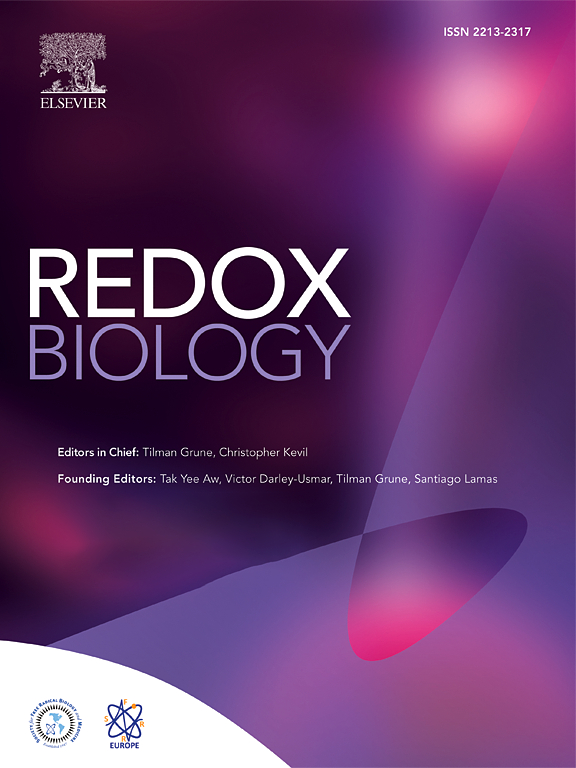Selenium deficiency impedes maturation of parvalbumin interneurons, perineuronal nets, and neural network activity
IF 10.7
1区 生物学
Q1 BIOCHEMISTRY & MOLECULAR BIOLOGY
引用次数: 0
Abstract
Selenoproteins are fundamental players in redox signaling that are essential for proper brain development and function. They are indispensable for the vitality of GABAergic parvalbumin-expressing interneurons (PVIs), a cell type characterized by fast-spiking activity and heightened rates of metabolism. During development, PVIs are preferentially encapsulated by specialized extracellular matrix structures, termed perineuronal nets (PNNs), which serve to stabilize synaptic structure and act as protective barriers against redox insults. Consequently, alterations in PVIs and PNNs are well chronicled in neuropsychiatric disease, and evidence from animal models indicates that redox imbalance during adolescence impedes their maturation. Herein, we examined the influence of selenium on maturation of neural network structure and activity in primary cortical cultures. Cultures grown in selenium-deficient media exhibited reduced antioxidant activity, impaired PNN formation, and decreased synaptic input onto PVIs at 28 days in vitro, which coincided with increased oxidative stress. Parallel studies to monitor longitudinal maturation of in vitro electrophysiological activity were conducted using microelectrode arrays (MEA). Selenium content affected the electrophysiological profile of developing cultures, as selenium-deficient cultures exhibited impairments in long-term potentiation in conjunction with reduced spike counts for both network bursts and in response to stimulation. Finally, similar PNN deficits were observed in the cortex of mice raised on a selenium-deficient diet, providing corroborative evidence for the importance of selenium in PNN development. In sum, these findings show the vital role of selenium for the development of GABAergic inhibitory circuits.

求助全文
约1分钟内获得全文
求助全文
来源期刊

Redox Biology
BIOCHEMISTRY & MOLECULAR BIOLOGY-
CiteScore
19.90
自引率
3.50%
发文量
318
审稿时长
25 days
期刊介绍:
Redox Biology is the official journal of the Society for Redox Biology and Medicine and the Society for Free Radical Research-Europe. It is also affiliated with the International Society for Free Radical Research (SFRRI). This journal serves as a platform for publishing pioneering research, innovative methods, and comprehensive review articles in the field of redox biology, encompassing both health and disease.
Redox Biology welcomes various forms of contributions, including research articles (short or full communications), methods, mini-reviews, and commentaries. Through its diverse range of published content, Redox Biology aims to foster advancements and insights in the understanding of redox biology and its implications.
 求助内容:
求助内容: 应助结果提醒方式:
应助结果提醒方式:


